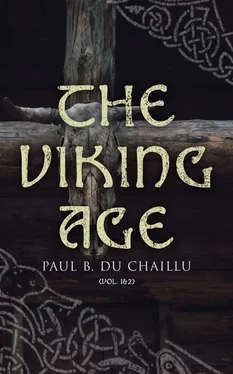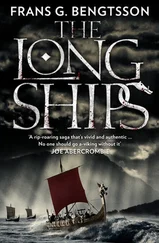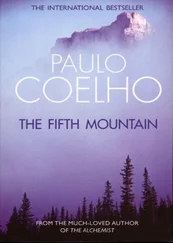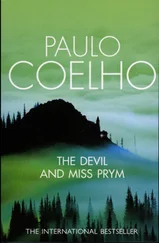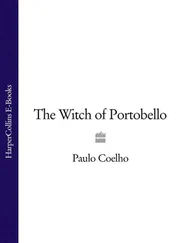She sees it poured over
By a muddy stream
From the pledge of Valfödr;
Know ye all up to this and onward?
Under the tree lived the three Nornir (Genii), who shape the destinies of men.
Thence come three maidens,
Knowing many things,
Out of the hall
Which stands under the tree;
One was called Urd,
Another Verdandi,
The third Skuld;
They carved on wood tablets,
They chose lives,
They laid down laws
For the children of men,
They chose the fates of men.
Hel was one of the nine worlds, and stood under the ash Yggdrasil, where the dead, who did not die on the battle-field, went. Hence, when a man had died, Hel-shoes were put on his feet for the journey.
Odin goes to the world of Hel, in which was the Gnipa cave, in order to inquire about the fate of his son Baldr who had died.
“Odin threw Hel (daughter of Loki) down into Niflheim, and gave her power over nine worlds; she was to lodge all those who were sent to her, namely, those who died of sickness and old age. She has a large homestead there, and her house-walls are wonderfully high, and her doors are large. Her hall is called Eljúdnir, her plate famine, her knife hunger; ganglati (lazy-goer, idler) her thrall; ganglöt (idler) her bondswoman; her threshhold is called stumbling-block; her bed the couch of one who is bed-ridden; her bed-hangings (ársal) the glittering evil. One half of her body is livid, and the other half skin-colour; therefore she is easily known, and her look is frowning and fierce” (Later Edda, c. 34, Gylfaginning).
“It is the beginning of this Saga that Baldr the Good dreamt great and dangerous dreams about his life. When he told them to the Asar they consulted and resolved to ask for safety for Baldr from every kind of danger; Frigg (Odin’s wife) took oaths from fire, water, iron, and every kind of metal, stones, earth, trees, sicknesses, beasts, birds, poison, serpents, that they would spare Baldr’s life. When this was done and known, Baldr and the Asar entertained themselves thus: he stood up at the Things and some gods shot at him, or others struck at him or threw stones at him. Whatever they did he was not hurt, and all thought this a great wonder. When Loki Laufey(jarson) saw this he was angry that Baldr was not hurt. He changed himself into a woman’s shape and went to Frigg in Fensalir. Frigg asked this woman if she knew what the Asar were doing at the Thing. She said that they all shot at Baldr, and that he was not hurt. Frigg said, ‘Weapons or trees will not hurt Baldr; I have taken oaths from them all.’ The woman asked, ‘Have all things taken oaths to spare Baldr’s life?’ Frigg answered, ‘A bush grows east of Valhöll called Mistiltein (mistletoe); I thought it was too young to take an oath.’ The woman went away; but Loki took the mistletoe and tore it up and went to the Thing. Höd (Baldr’s brother) stood in the outmost part of the ring of people. Loki said to him, ‘Why doest thou not shoot at Baldr?’ He answered, ‘Because I do not see where he is, and also I am weaponless.’ Loki said, ‘Do like other men and show honour to Baldr; I will show thee where he stands; shoot this stick at him.’ Höd took the mistletoe and shot at Baldr as Loki showed him; it pierced Baldr, who fell dead to the ground. This was the most unfortunate deed that has been done among the gods and men. When Baldr was fallen none of the Asar could say a word or touch him with their hands, and they looked at each other with the same mind towards the one who had done this deed, but no one could take revenge; it was such a place of peace. When they tried to speak the tears came first, so that no one could tell to the other his sorrow in words. Odin suffered most from this loss, because he knew best what a loss and damage to the Asar the death of Baldr was. …” (Gylfaginning, c. 49).
“It is to be told of Hermód that he rode nine nights through dark and deep valleys and saw nothing before he came to the river Gjöll 29and rode on the Gjallar bridge, 30which is covered with shining gold. 31Modgud is the name of the maiden who guards the bridge; she asked him his name and kin, and said that the day before five arrays of dead men rode over the bridge, ‘but the bridge sounds not less under thee alone, and thou hast not the colour of dead men; why ridest thou here on the way of Hel?’ He answered, ‘I am riding to Hel to seek Baldr, or hast thou seen Baldr on the way of Hel?’ She answered that Baldr had ridden over the Gjallar bridge, ‘but the way of Hel lies downward and northward.’ Hermód rode till he came to the gates of Hel; then he alighted and girthed his horse strongly, mounted and pricked it with the spurs; the horse leaped so high over the gate that it touched nowhere. Then Hermód rode home to the hall, alighted, went in and saw his brother Baldr sitting in a high-seat; he stayed there the night. In the morning Hermód asked Hel to allow Baldr to ride home with him, and told how great weeping there was among the Asar. Hel said she would see if Baldr was as beloved as was told; if all things, living and dead, in the world weep over him, he shall go back to the Asar, but remain with Hel (me) if any refuse or will not weep. Then Hermód rose, and Baldr let him out of the hall and took the ring Draupnir and sent it to Odin as a remembrance, and Nanna 32sent to Frigg a linen veil and more gifts, and to Fulla a gold ring. Then Hermód rode back to Asgard and told all the tidings he had seen or heard. Thereupon the Asar sent messengers all over the world to ask that Baldr might be wept out of Hel, and all did it, men and beasts, earth and stones, trees, and all metals, as thou must have seen that these things weep when they come from frost into heat. When the messengers went home and had performed their errands well, they found a jötun woman sitting in a cave, called Thökk; they asked her to weep Baldr (out of) Hel; she answered—
Thökk will weep
With dry tears
The burning voyage of Baldr;
I never enjoyed
A living or a dead man’s son;
May Hel keep what she has.
It is guessed that this was Loki Laufeyjarson, who had caused most evils among the Asar.”
“Then also the dog Garm, which is tied in front of Gnipa cave, got loose; he is the greatest terror, he fights Tyr and they kill each other” (Gylfaginning, c. 5).
The wicked seem to have died twice: first they die and get into Hel, then they die again and get into Niflhel = Foggy Hel . The following is one of the answers of Vafthrudnir to Odin:—
Of the runes 33of Jötnar
And those of all the gods
I can tell thee true,
For I have been
In every world;
I have gone to nine
Worlds beneath Nifl-hel ;
There die the men from Hel .
The sides of the rim of heaven communicate with each other by a bridge called Bifröst, or the bridge of the Asar, on which Heimdall, the watchman of the gods, stood.
“Heimdall is the watchman of the gods standing on Bifröst Bridge (the rainbow)” (Later Edda, 27).
“Heimdall is named the White As: he is great and holy; nine maidens bore him as son, and they were all sisters. He is also called Hallinskidi and Gullintanni (gold tooth). His teeth were of gold, his horse is called gold maned. He lived at a place called Himinbjörg (heaven mountains) by Bifröst. He is the warden of the gods, and sits there at the end of heaven to guard the bridge against the Berg Risar (mountain Jötnar); he needs less sleep than a bird, he can see equally by night and by day a hundred leagues away, and he hears when the grass grows, or the wool on the sheep, and all that is louder than these. He has the horn called Gjallarhorn, and his blowing is heard through all worlds. The sword of Heimdall is called Höfud” (Gylfaginning, 27).
Читать дальше
